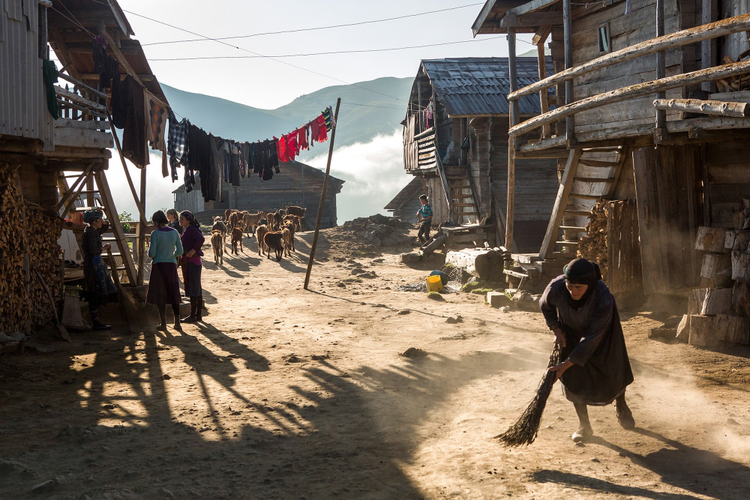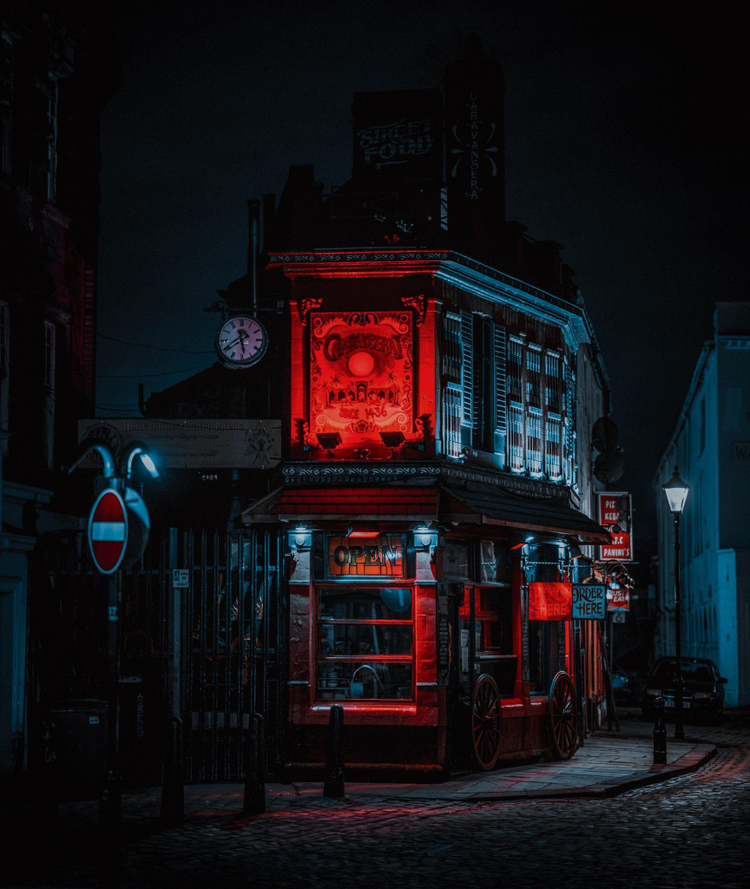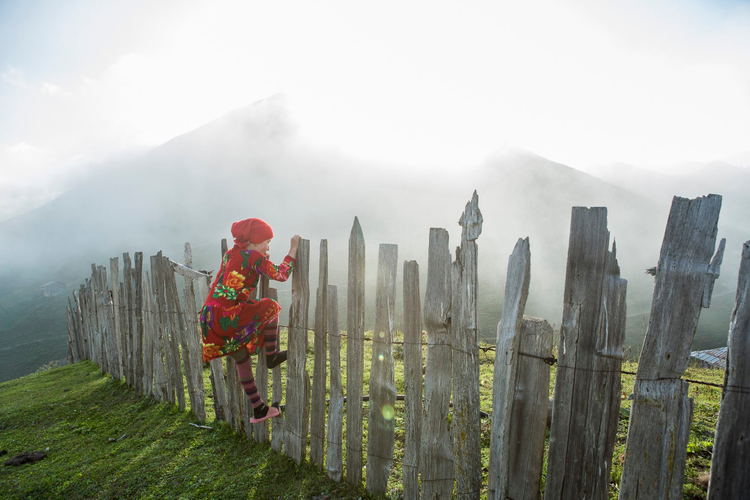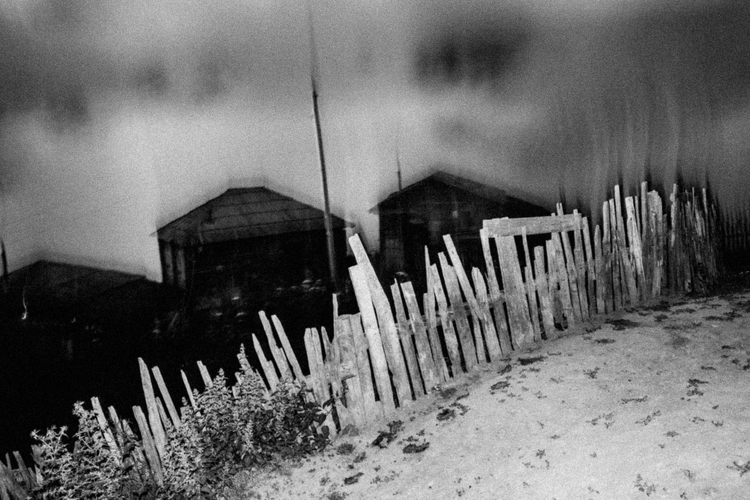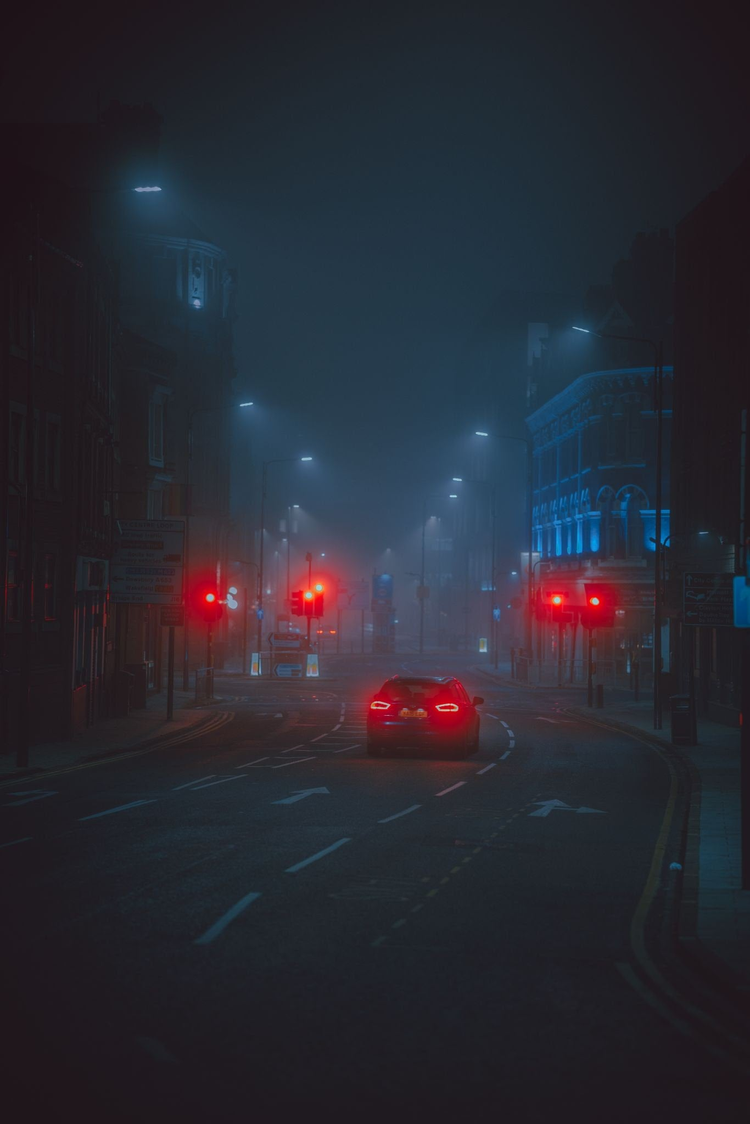Natela Grigalashvili was just 16 when she parted ways with her small Georgian village and made for the nation’s capital of Tbilisi to study photography. All across the country, rural life was in a state of collapse. Someone had to record the young children playing in the streets in their traditional dress and shepherds on the way to the animal market before it was too late.
In contrast, people are almost totally absent in Manfred Teh’s work. Based out of Leeds, he’s less interested in documenting the English city he calls home than transforming it into a moody “cyberpunk” underworld.
The two photographers, with their sharply contrasting styles and missions, represent the diversity available within the genre of street photography. But while their final images may not look anything alike, both rely on many of the same finely honed best practices — from a passionate commitment to a consistent look, to selecting a subject, to the moment they snap their computer shut, satisfied that their edits have done their visions justice. To learn more about their tried-and-true methods, read on.
Guide to capturing street photography
Check out Adobe’s guide to street photography for advice about recognizing the rules of the street and capturing public life respectfully.
Learn more
Developing a look and feel that is all your own
For Grigalashvili, creating a cohesive body of work begins with her dedication to the unique and underrepresented subject of daily life in Georgia’s few remaining mountain towns. In her photos, kerchiefed young girls dance in mountain fields, men enjoy feasts in the village hall, and women build haystacks — all scenes and faces that almost certainly would be lost to time if not for her.
Teh, on the other hand, does most of his street photography late at night when life is most muted, and the streets are at their most bare. Doing so grants him uncluttered access to his preferred subject: the city itself. Asphalt, concrete, metal, glass, neon — in image after image these markers of urban life squeeze out any hint of the natural world.
When it comes to carving out a distinct brand, this faithfulness to one general subject is only the first step for these street photographers. The second is how they frame those subjects.
“To create a story, a visual narrative, your images must have the same style,” Grigalashvili said. For her, this means combining movement, natural lighting, and a wide angle to create a series of cinematic images that feel cut from a documentary. The final result is an Instagram feed that feels less like isolated photos captured over multiple years and locations, and more like stills taken from a single film about life in just one village.
Teh, a cinephile, draws inspiration from the Batman series for his dim, blue-tinted images. “When an image is cloudy and moody, it makes you feel on edge,” he said. “The scene feels more interesting that way.” Sure enough, image after image shows Teh reveling in inky shadows, eerie stillness, and cool colors. The effect is a portfolio as recognizable as it is brooding.
Composing the shot
Unlike, say, newborn or portrait photography, street photography challenges you to select a subject often on the fly and from a constantly changing scene you have little to no control over. To know where to point your lens, both Grigalashvili and Teh agree — look toward the light. For the former, this means rays of sun escaping through broken clouds or open barn doors. For the latter, it’s all about street lamps, car lights, and illuminated window signs.
Less important than your source is determining how to use that light to your advantage, whether that means getting in close to detail the weathered hands it illuminates, or zooming out to capture a glittering cityscape. If, like Grigalashvili, you prefer natural light photography, be sure to have your camera ready during sunrise and sunset when sharp rays and deep shadows dish up ample drama and stark silhouettes.
In addition to light, both street photographers advocate for leading lines, be it a bridge or a railing. These, too, help frame the subject and add depth to the scene by drawing the eye deeper within the shot. Even where dramatic leading lines are absent, however, you can still create a shot that feels three-dimensional by stacking subjects to create a distinct foreground, middle ground, and background.
Editing for story and style
Grigalashvili’s first step in the editing process is always the same: She waits. “Like every photographer, I have a very strong emotional connection to my photos,” she said. “I remember the stories and everything that was happening just beyond the frame.” By putting a shoot aside for a month or more, she is better able to assess which photos actually embody the story she wants to tell — not just the ones that were somehow more meaningful in the moment.
Once she has those, she opens them in Photoshop, where she can begin to shape that story. “When I’m editing, my goal is to direct the viewer’s eye to certain details they otherwise might have missed,” she said. “That way I can better reveal the narrative of a photo.”
Rather than crop images — something she stresses she rarely does — Grigalashvili relies on color and light to eliminate noise and focus attention. In practice, this means making liberal use of the Brightness/Contrast adjustment to see at which point certain details emerge and others drift into the background. At the same time, she adjusts the white balance and color sliders to mute any distractions and excavate her subjects.
Occasionally, the best thing she can do for a photo’s narrative is to drain away the color altogether. For this, she uses Photoshop’s black and white adjustment tool. By exposing the bones underneath, she’s able to achieve an overwhelming sense of timelessness.
Teh also makes liberal use of the contrast slider, albeit in Lightroom, where his personally tailored presets allow him to apply his signature blue hues across an entire batch of photos with a single click. “I just try to keep my style as consistent as possible,” he said.
Even when he uses presets, however, he still finds himself fine-tuning individual images using each of the sliders, starting with contrast and white balance. Among his biggest challenges is taming orange streetlights. “That’s tricky,” he said. Here the hue, saturation, and luminance tools allow him to pull the warmer lights back into the cooler side of the spectrum — or pump them up for contrast.
Clean lines and sleek backdrops are critical to Teh’s cyberpunk aesthetic. And while shooting when the streets are quiet helps, distracting elements often creep in. To fix these, he simply right clicks his image and selects “Edit in Photoshop,” where he can lasso and clone stamp away stray wires, people, or cars.
Making street photography your own
When Grigalashvili started posting her images to Instagram, she had no idea anyone would care about the rural towns she was so set on preserving with her camera. Five years on, she has tens of thousands of highly engaged followers from around the world pouring out their praise in a litany of languages. “I can’t really put it into words how much encouragement it gives me,” she said.
She and Teh are proof that there is no one trend or style you have to adopt to make it as a street photographer. What you do need is a unique view of the world in need of preservation, as well as a connection to your subjects. “These mountain villages aren’t just interesting to me as some kind of outsider,” Grigalashvili concluded. “I feel extremely close and connected to these people.”
It can be tempting to assume that the best street photography happens where the biggest buildings meet the busiest streets. Instead, focus on what you know to build a portfolio that sees beyond first impressions, stereotypes, and the most obvious shots.
Check out Adobe’s guide to street photography for advice about recognizing the rules of the street and capturing public life respectfully. For a beginner’s guide to night photography, click here.
